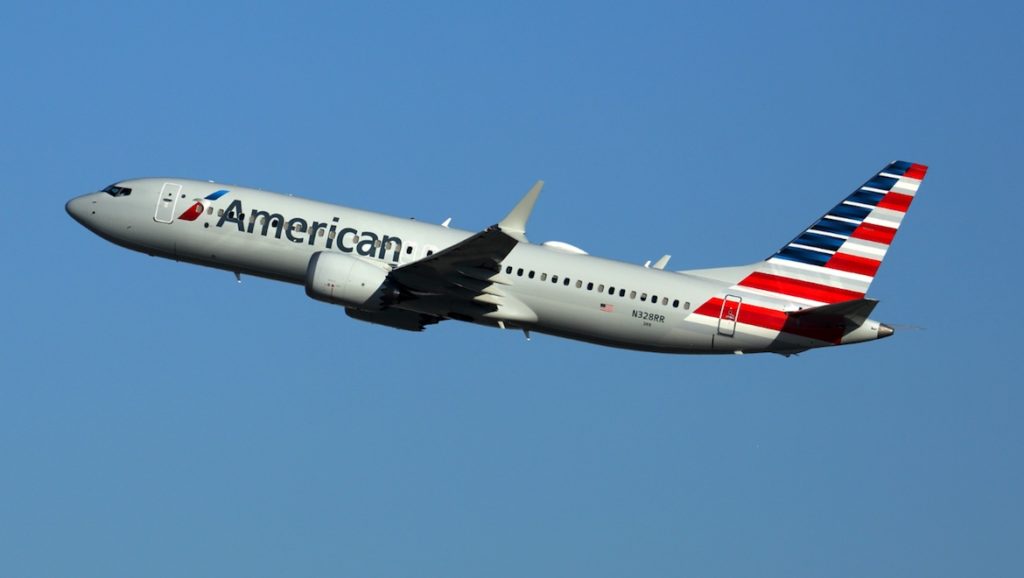Estimated reading time 6 minutes, 7 seconds.
The Federal Aviation Administration (FAA) on Nov. 18 announced it has rescinded the order that grounded Boeing 737 Max 8 and Max 9 aircraft for the past 20 months, after a lengthy re-certification process following two 737 Max 8 crashes in 2018 and 2019.
The 737 Max has been grounded worldwide since March 2019. Since then, the FAA and the plane manufacturer, Boeing, have been working to ensure the plane is safe to carry passengers once again.

As part of the re-certification process, Boeing has upgraded the plane’s Maneuvering Characteristics Augmentation System (MCAS) — which was believed to be a causing factor in the crashes — to add “three additional layers of protection,” and has updated the flight control software.
The FAA stated in a press release issued on Nov. 18 that its announcement does not allow the 737 Max to immediately return to commercial service. The Administration is requiring new training on the MCAS system, Enhanced Digital Flight Control System (EDFCS), Max flight control system and gear handle, and more. The FAA also published an Airworthiness Directive (AD) indicating design changes that must be made to the plane before its return to service.
The AD requires the revision of certificate limitations and operating procedures of the Airplane Flight Manual (AFM) to provide flight crews with runaway horizontal stabilizer trim procedures to follow under certain conditions. Additionally, the AD requires the installation of new flight control computer software, revising the existing AFM to incorporate new and revised flight crew procedures, installing new Max display system software, changing the horizontal stabilizer trim wire routing installations, completing an angle of attack sensor system test, and performing an operational readiness flight.
“The FAA’s directive is an important milestone,” said Stan Deal, president and chief executive officer of Boeing Commercial Airplanes. “We will continue to work with regulators around the world and our customers to return the airplane back into service worldwide.”
737 Max planes operated by airlines under the FAA’s jurisdiction will not be permitted to return to the skies until the airlines complete software updates and pilot training, which could take around 30 days.
The FAA said it will retain its authority to issue airworthiness certificates and export certificates for the 737 Max planes built since the type was grounded 20 months ago. The FAA is planning to carry out in-person, individual inspections, which could take more than a year to complete.
American Airlines said on Oct. 19 it plans to put a single daily 737 Max flight back on its schedule starting Dec. 29 for a Miami-New York route. The announcement was pending the aircraft’s re-certification in the U.S.
Conversely, Southwest Airlines, which has the largest Max 8 fleet in the U.S., said it would not start scheduling 737 Max flights until Q2 2021. The airline plans to take the necessary time to comply with the FAA’s requirements.
The FAA concluded re-certification flights on the Max on July 1, and the plane was piloted by FAA administrator Steve Dickson on Sept. 30 as part of a pledge to ensure the plane’s safety. Dickson had insisted he must be “satisfied that I would put my own family on [the plane] without a second thought.”
The FAA said the “design and certification of this aircraft included an unprecedented level of collaborative and independent reviews by aviation authorities around the world.”
Other global regulators are moving closer to final decisions on allowing the Max to return to flying.
Transport Canada was the first foreign aviation regulatory authority to conclude re-certification test flights on the Max, which occurred in late August. Transport Canada has been working with aviation regulatory authorities in Europe and Brazil, as well as the FAA, to establish requirements for the plane’s safe return to service.
“Transport Canada safety experts continue their independent validation process to determine whether to approve the proposed changes to the aircraft,” Transport Minister Marc Garneau said in a Nov. 18 statement, following the FAA’s announcement.
“We expect this process to conclude very soon. However, there will be differences between what the FAA has approved today, and what Canada will require for its operators. These differences will include additional procedures on the flight deck and pre-flight, as well as differences in training.”
The operation of Boeing 737 Max aircraft in Canadian airspace will remain restricted “until the department is fully satisfied that all its safety concerns have been addressed,” Garneau said.
In addition to the changes made to the plane, and the new pilot training requirements, Boeing said it is taking further steps to “strengthen its focus on safety quality,” namely with its engineering team and design processes.
“We will never forget the lives lost in the two tragic accidents that led to the decision to suspend operations,” said David Calhoun, chief executive officer of The Boeing Company. “These events and the lessons we have learned as a result have reshaped our company and further focused our attention on our core values of safety, quality and integrity.”








